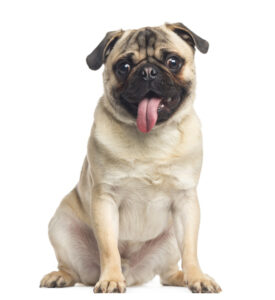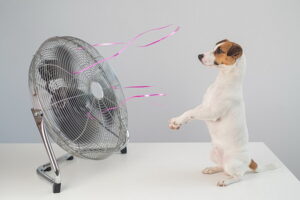
During these hot summer days, especially in the ones in the Midwest, we thought we’d give you some insight into how to take care of your canine family. There are many ways to keep your dog cool. We will list the most significant ones here but first, let’s look into when your pet starts to feel uncomfortably hot.
When Dogs Get the Hot Spells
Dogs can start feeling hot when the temperature in their residing environment rises above their comfort level. Additionally, their body temperature will rise if they are active (running around, etc.). This is why there are so many alerts about humans exercising or working in hot conditions and if humans have a hard time dealing with a hot environment, just think how dogs feel. Especially those that have an abundance of fur!
In general, canines will feel hot and uncomfortable when the temperature exceeds 80 degrees Fahrenheit, but it should be noted that this comfort level will differ depending on the breed of dog that you have and so their heat tolerance level will vary. With that said, however, stick to the 80-degree suggestion or if you want a more precise recommendation, ask your vet.
Your pet’s body temperature reaches 103 degrees or more, it can lead to organ failure and even death. Their body temperature can range from 101° to 102.5°, compared to humans whose body temperature ranges from 97.6° to 99.6°. When your dog’s temperature is 103° F or higher, it is considered a dog fever.
About Specific Breeds
As mentioned, certain dog breeds are more susceptible to heat-related issues due to their physical characteristics. Brachycephalic breeds (skull bones that are shortened in length) such as bulldogs and pugs have compromised respiratory systems and subsequently, are more sensitive to the hot weather than other breeds.
What to Look For
If you see any of the following conditions, you must help them as soon as possible:
-
- Excessive panting
- Drooling, restlessness
- Weakness
- Disorientation
- Seeking shade
- Lying flat on cool surfaces
Any of these can relate to your pet feeling overheated.
How to Keep Your Dog Cool

As mentioned, do what is necessary to keep the environment you and your pet are in below 80 degrees. Some of the items mentioned below may sound like common sense, but you’d be surprised how many people do not follow these basic rules.
-
- Give them water ASAP.
- If you are in a house and there is air conditioning, turn it on or use a fan if there are no cooling systems.
- If you are outside, bring them to a cool place, or if there is no place to go immediately, put them in the shade.
- When you know hot weather is coming and you want to prepare, you can buy dog cooling vests.
- If you have a backyard, think about a dog pool.
In Summary
It’s essential to monitor your dog’s behavior for signs of overheating. If you suspect your dog is feeling hot, it’s important to act quickly so that he or she doesn’t fall into the fever category or more importantly, that they are back to feeling comfortable.
